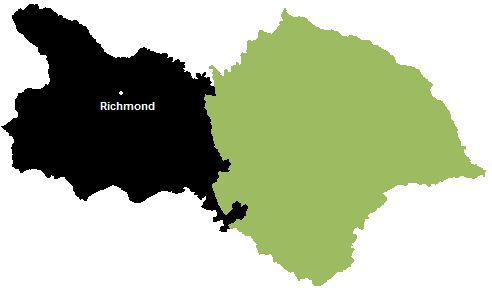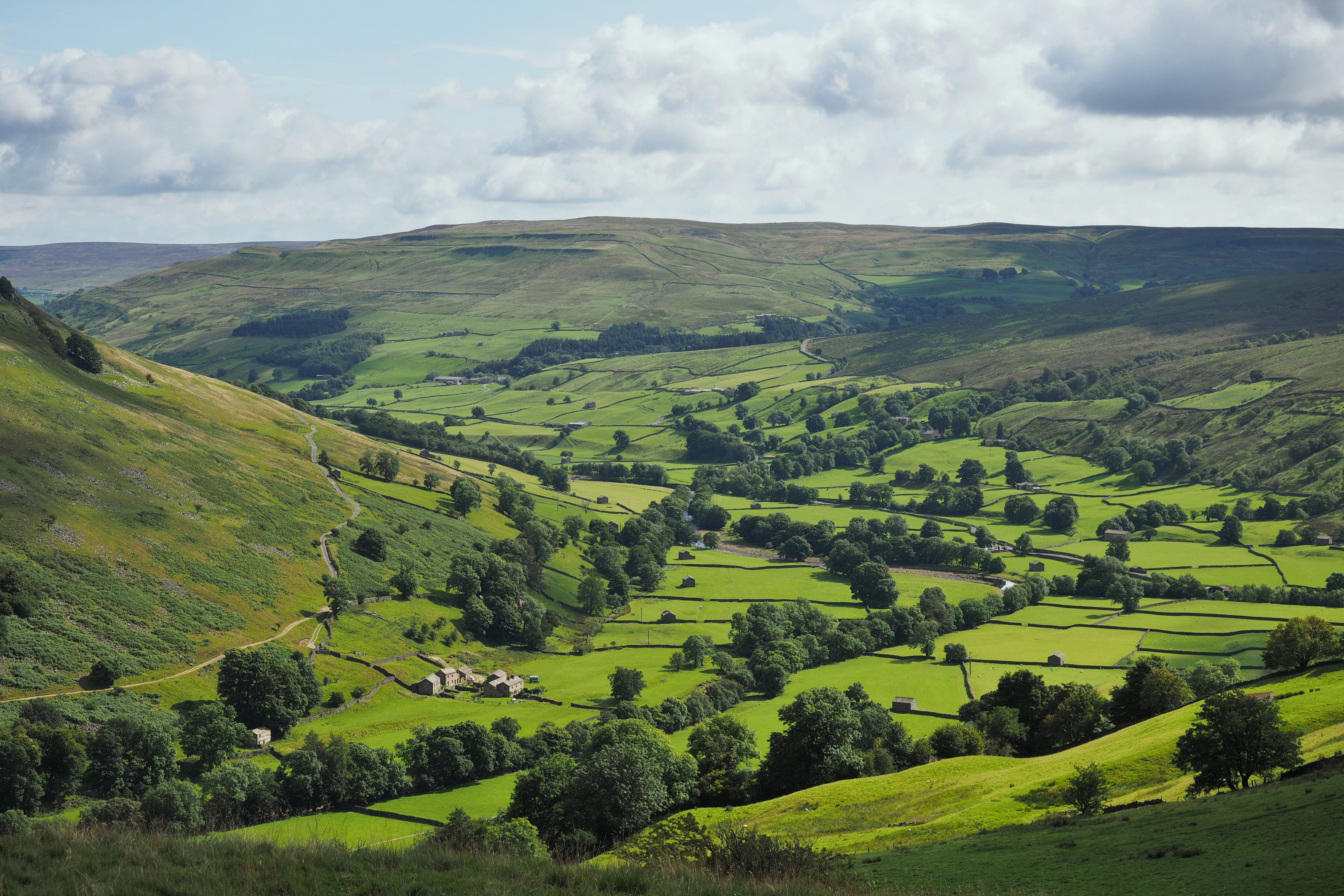|
Feetham
Feetham is a hamlet opposite Low Row in the Yorkshire Dales, North Yorkshire, England. The origin of the place-name is from Old Norse and means place at ''the riverside meadows''; it appears as ''Fytun'' in 1242. References External links Villages in North Yorkshire Swaledale {{richmondshire-geo-stub ... [...More Info...] [...Related Items...] OR: [Wikipedia] [Google] [Baidu] |
Low Row
Low Row is a village in Swaledale, in the Yorkshire Dales, North Yorkshire, England. It lies about 3 miles west of Reeth and is between Healaugh and Gunnerside. It is part of the Richmondshire parish Melbecks. It is a linear village running along one road, the B6270. To the east, Low Row merges with the settlement of Feetham. A working farm, Hazel Brow Farm, is open to visitors and 'The Punch Bowl', a stone inn dated 1638, is by the main road. History The name Low Row comes from the Norse "The Wra" (a nook). The surname "Raw" is associated with the village. The village was raided by Jacobites in 1745, and bodies probably from that raid are buried at the church in Low Row. On 5 July 2014, the Tour de France Stage 1 from Leeds to Harrogate passed through the village. Smarber Chapel and Low Row United Reformed Church Philip, Lord Wharton, owned land in the area. On this stood a number of shooting lodges including one at Crackpot, near Keld, and one at Smarber, a small ... [...More Info...] [...Related Items...] OR: [Wikipedia] [Google] [Baidu] |
Richmondshire
{{Infobox settlement , name = Richmondshire District , type = District , image_skyline = , imagesize = , image_caption = , image_blank_emblem= Richmondshire arms.png , blank_emblem_type = Coat of arms , image_map = Richmondshire UK locator map.svg , map_caption = Shown within North Yorkshire , mapsize = frameless , subdivision_type = Sovereign state , subdivision_name = United Kingdom , subdivision_type1 = Constituent country , subdivision_name1 = England , subdivision_type2 = Region , subdivision_name2 = Yorkshire and the Humber , subdivision_type3 = Administrative county , subdivision_name3 = North Yorkshire , seat_type = Admin. HQ , seat = Richmond , government_type = Richmondshire District Council , leader_title = Leadership: , leader_name = Alternative – Sec.31 , leader_title1 = Executive: , leader_name1 = {{English district cont ... [...More Info...] [...Related Items...] OR: [Wikipedia] [Google] [Baidu] |
North Yorkshire
North Yorkshire is the largest ceremonial county (lieutenancy area) in England, covering an area of . Around 40% of the county is covered by national parks, including most of the Yorkshire Dales and the North York Moors. It is one of four counties in England to hold the name Yorkshire; the three other counties are the East Riding of Yorkshire, South Yorkshire and West Yorkshire. North Yorkshire may also refer to a non-metropolitan county, which covers most of the ceremonial county's area () and population (a mid-2016 estimate by the ONS of 602,300), and is administered by North Yorkshire County Council. The non-metropolitan county does not include four areas of the ceremonial county: the City of York, Middlesbrough, Redcar and Cleveland and the southern part of the Borough of Stockton-on-Tees, which are all administered by unitary authorities. The non-metropolitan county and the City of York are within the Yorkshire and the Humber region. Middlesbrough, Redcar ... [...More Info...] [...Related Items...] OR: [Wikipedia] [Google] [Baidu] |
Yorkshire Dales
The Yorkshire Dales is an upland area of the Pennines in the historic county of Yorkshire, England, most of it in the Yorkshire Dales National Park created in 1954. The Dales comprise river valleys and the hills rising from the Vale of York westwards to the hilltops of the Pennine watershed. In Ribblesdale, Dentdale and Garsdale, the area extends westwards across the watershed, but most of the valleys drain eastwards to the Vale of York, into the Ouse and the Humber. The extensive limestone cave systems are a major area for caving in the UK and numerous walking trails run through the hills and dales. Etymology The word ''dale'', like ''dell'', is derived from the Old English word ''dæl''. It has cognates in the Nordic/ Germanic words for valley (''dal'', ''tal''), and occurs in valley names across Yorkshire and Northern England. Usage here may have been reinforced by Nordic languages during the time of the Danelaw. Most of the dales are named after their river or stre ... [...More Info...] [...Related Items...] OR: [Wikipedia] [Google] [Baidu] |
The Punch Bowl Inn , Feetham , Dated 1638
''The'' () is a grammatical article in English, denoting persons or things that are already or about to be mentioned, under discussion, implied or otherwise presumed familiar to listeners, readers, or speakers. It is the definite article in English. ''The'' is the most frequently used word in the English language; studies and analyses of texts have found it to account for seven percent of all printed English-language words. It is derived from gendered articles in Old English which combined in Middle English and now has a single form used with nouns of any gender. The word can be used with both singular and plural nouns, and with a noun that starts with any letter. This is different from many other languages, which have different forms of the definite article for different genders or numbers. Pronunciation In most dialects, "the" is pronounced as (with the voiced dental fricative followed by a schwa) when followed by a consonant sound, and as (homophone of the archaic pro ... [...More Info...] [...Related Items...] OR: [Wikipedia] [Google] [Baidu] |
Old Norse
Old Norse, Old Nordic, or Old Scandinavian, is a stage of development of North Germanic languages, North Germanic dialects before their final divergence into separate Nordic languages. Old Norse was spoken by inhabitants of Scandinavia and their Viking expansion, overseas settlements and chronologically coincides with the Viking Age, the Christianization of Scandinavia and the consolidation of Scandinavian kingdoms from about the 7th to the 15th centuries. The Proto-Norse language developed into Old Norse by the 8th century, and Old Norse began to develop into the modern North Germanic languages in the mid-to-late 14th century, ending the language phase known as Old Norse. These dates, however, are not absolute, since written Old Norse is found well into the 15th century. Old Norse was divided into three dialects: Old West Norse, ''Old West Norse'' or ''Old West Nordic'' (often referred to as ''Old Norse''), Old East Norse, ''Old East Norse'' or ''Old East Nordic'', and ''Ol ... [...More Info...] [...Related Items...] OR: [Wikipedia] [Google] [Baidu] |
Villages In North Yorkshire
A village is a clustered human settlement or community, larger than a hamlet but smaller than a town (although the word is often used to describe both hamlets and smaller towns), with a population typically ranging from a few hundred to a few thousand. Though villages are often located in rural areas, the term urban village is also applied to certain urban neighborhoods. Villages are normally permanent, with fixed dwellings; however, transient villages can occur. Further, the dwellings of a village are fairly close to one another, not scattered broadly over the landscape, as a dispersed settlement. In the past, villages were a usual form of community for societies that practice subsistence agriculture, and also for some non-agricultural societies. In Great Britain, a hamlet earned the right to be called a village when it built a church. [...More Info...] [...Related Items...] OR: [Wikipedia] [Google] [Baidu] |




.png)

